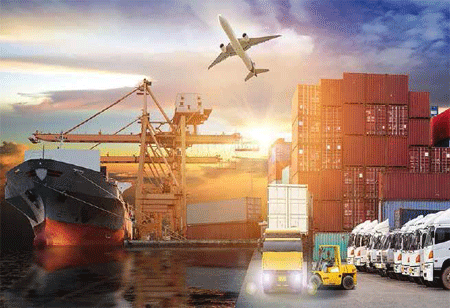
Renowned for his commercial developments, he follows healthy lifestyle and collects gadgets which are new to the market and likes sketching.
Shippigo is a logistics automation company, that provides a plug and play solution that enables companies and business to start shipping across the world in an instant. Having integrations available with all the leading carriers and e-commerce enablers, Shippigo supplies a solution to problems faced by business owners like weight discrepancy, cod verification, bulk processing, order fulfilment etc. Shippigo is based out of Gurugram and stared in August 2018.
In the post-Covid world, the dependence on logistics has grown manifold. Driven by the surge in e-commerce, a segment that was already a massive consumer of logistic supply, the shipping and logistics industry in all its forms has become more of a lifeline for the everyday functioning of the country. The shipment volumes have skyrocketed, and this has come with its own set of challenges. The opportunities are visible. With everyone preferring to buy digitally from the comfort of their homes, the industry got an adrenaline boost and got catapulted into the future. Now the race has started to get more volume which is increasing daily.
Companies are working on further widening their reach, to cater to more consumers. The locations which were once overlooked have become more possible. Even the small regional players have received help from the situation as the bulk movements have also increased. The market has become more welcoming and it’s the right time for innovative ideas to come forth which will drive the sector forward. In India, the logistic industry is highly fragmented with no single player commanding the lion share.
Each logistic company has its core competencies and they work with them. For example, in tier 3 locations local service providers still offer the best turnaround time for deliveries. Bigger players work with smaller players and use their ability to increase their network. This consolidation has helped in setting up a network of interconnected carriers. And with the increased demand it is vital to keep the user experience at the helm.
The e-commerce industry is still at a nascent stage and it can only reach its true potential if the whole experience from ordering to delivery of the product is seamless
The e-commerce industry is still at a nascent stage and it can only reach its true potential if the whole experience from ordering to delivery of the product is seamless. This seamlessness can only be brought in by having the right kind of processes in place. There is still a huge gap in the industry’s demand and supply. To make up for the sudden spike in orders compromises were made in staff onboarding and training, which became clear after some time.
Although the situation has stabilized in metros, there is still a huge skill and manpower deficit in tier one and two cities. With airline cargo becoming dearer the logistics operations in the country have become more surface oriented and this, in turn, requires much more dedicated staff. Mass hiring camps have been organized by most companies but what is lacking in quality control. Technology has already taken over all-out lives and the same goes for any industry.
If we can’t scale up the technical infrastructure in the logistic space, then it will be very difficult to make the most out of this opportunity. Investments need to make on streamlining the technical process and roll out more features. There should be a bridge between larger and small regional players. Better shipment management is needed to supply the best service to first-time e-commerce adapters. This will not only increase their confidence in the industry but also have others become more open towards imbibing the same into their lifestyle.
Companies need to control and regulate the instances of fake delivery attempts, pilferage, rude behaviour which tend to leave a sour taste. To capitalize on this immense opportunity a proper employee training exercise is needed alongside a strict watch on employee behaviour. The entire process should be digitized and should be a routine exercise and not a one-time activity. The major challenge at this moment is the lack of manpower. With the demand at an all-time high proper training is not being provided to the limited supply of manpower that is there.
This needs to be remedied by giving more benefits and keeping quality standards. Better warehousing infrastructure is needed as there have been frequent instances of hubs getting choked which in turn leads to further delays or at times the shipment getting lost. Smaller and larger players need to work together for there to be complete countrywide coverage. Smaller players lack the technical infrastructure to supply a consistent experience. This needs to change.
The present surge is just a precursor to the massive opportunity that is instore for the logistic and shipping industry. Provided the right approach is taken and we keep up with the changing consumer patterns and requirements, the future seems incredibly positive.
We use cookies to ensure you get the best experience on our website. Read more...